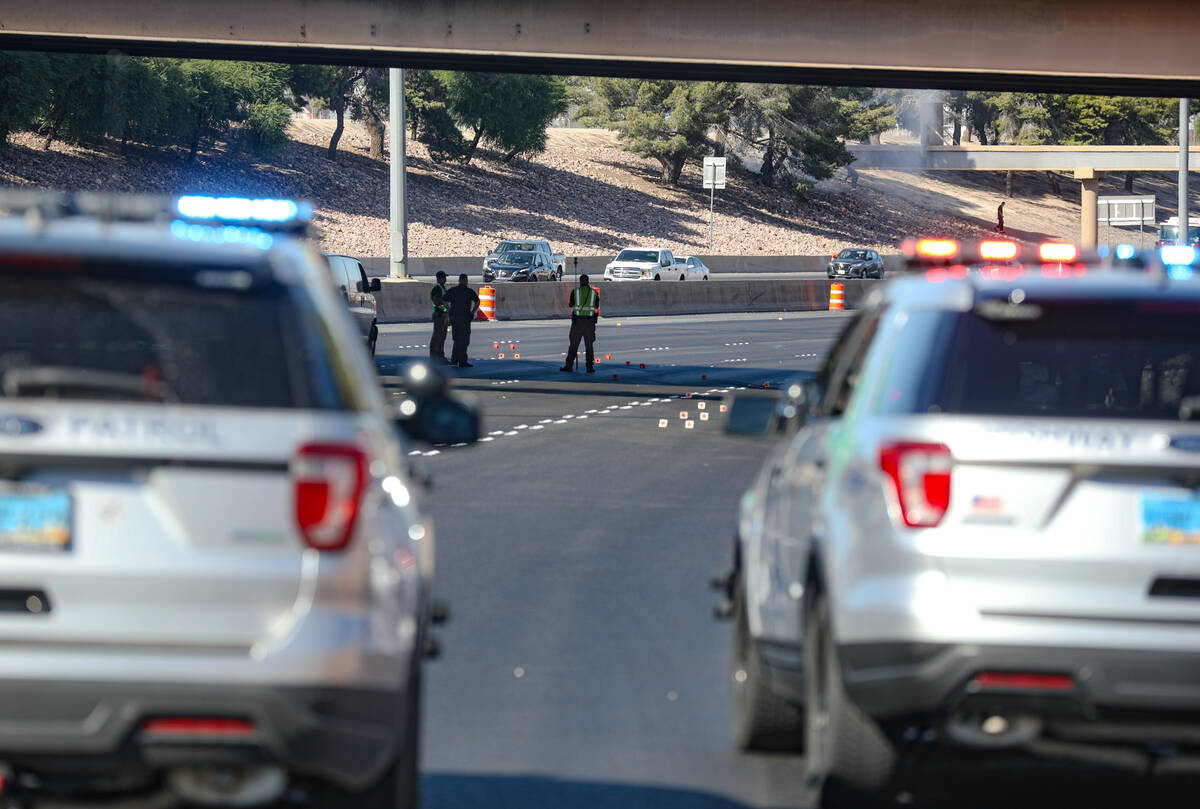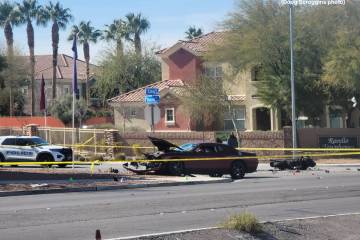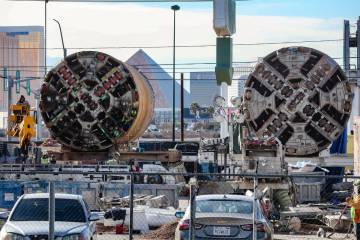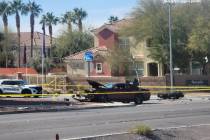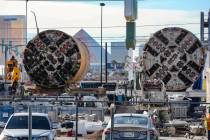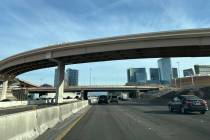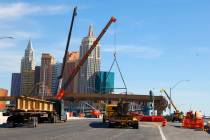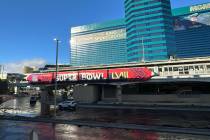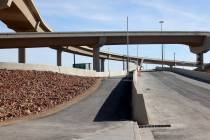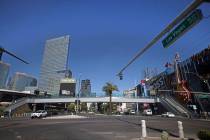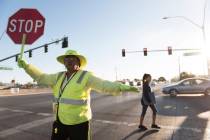More Nevada drivers topping 100 as UNLV aims to change behavior
UNLV’s Kirk Kerkorian School of Medicine received grant money to continue a traffic safety study that attempts to highlight the human toll crashes in the state have on those involved.
Dr. Deborah Kuhls, associate dean for research and professor of surgery at the school of medicine, and her team has been analyzing crash, injury and non-adjudicated citation data for more than a decade to inform prevention and policy initiatives.
Last year’s study by the school took a deep dive into the behaviors that lead to crashes in the state.
“It is just really important to point out that those (crashes) relate to human lives and in order for us to really solve some of the challenges of traffic safety,” said Kuhls, who is also chief of trauma at University Medical Center. “I think there’s compelling information there, distracted driving, aggressive driving, speeding being a few, they really do have consequences that really related to human life.”
The Nevada Department of Public Safety, Office of Traffic Safety awarded UNLV’s school of medicine a $571,279 grant to to continue its work regarding addressing traffic-related injuries and fatalities in Nevada.
The school’s most recent study revealed there has been a notable rise in citations related to speeds of 100 mph or more in Nevada, jumping nearly 50 percent increase in just two years.
“No, I’m not surprised, really,” Kuhls said of the increase of 100-mph drivers, despite the known risks associated with traveling at that high rate of speed.
In 2022, Nevada had the sixth-highest number of confrontational drivers.
Between 2018-21, 1.4 million citations were issued by Nevada law enforcement agencies, of which 38,172 were related to aggressive driving, careless driving, reckless driving or failure to exercise due care.
Of these citations, 70.5 percent were associated with a motor vehicle crash.
Traffic-related injuries and deaths remain an increasing public health challenge.
Having the data that ties different dangerous driving behaviors to crashes is one way Kuhls hopes the school’s studies have an effect on Nevadans when they get behind the wheel.
“Sometimes people are like, “I can get away with speeding, but statistically you’re putting yourself and others at risk,” Kuhls said. “Trying to really create a message the public and our legislators that traffic crashes really have a significant human behavior component. In order to effect change, we are each going to need to accept responsibility for our own behavior.”
So the next time you have a split-second decision behind the wheel, such as stopping for a yellow light instead of speeding through the intersection, Kuhls urges drivers to make the safest possible decision.
“Those decisions really make a difference,” Kuhls said.
The new round of funding will allow for Kuhls and her team this year to focus on all crashes that lead to any type of medical attention, instead of only focusing on severe injuries.
That includes medical facilities, such as ones located in rural areas, handling patients suffering from traumatic injuries, even when they are not a trauma care center.
“I think that will give us a different lens to look at crashes and opportunities to target certain populations or certain areas for our intervention work,” Kuhls said.
Contact Mick Akers at makers@reviewjournal.com or 702-387-2920. Follow @mickakers on X. Send questions and comments to roadwarrior@reviewjournal.com.



